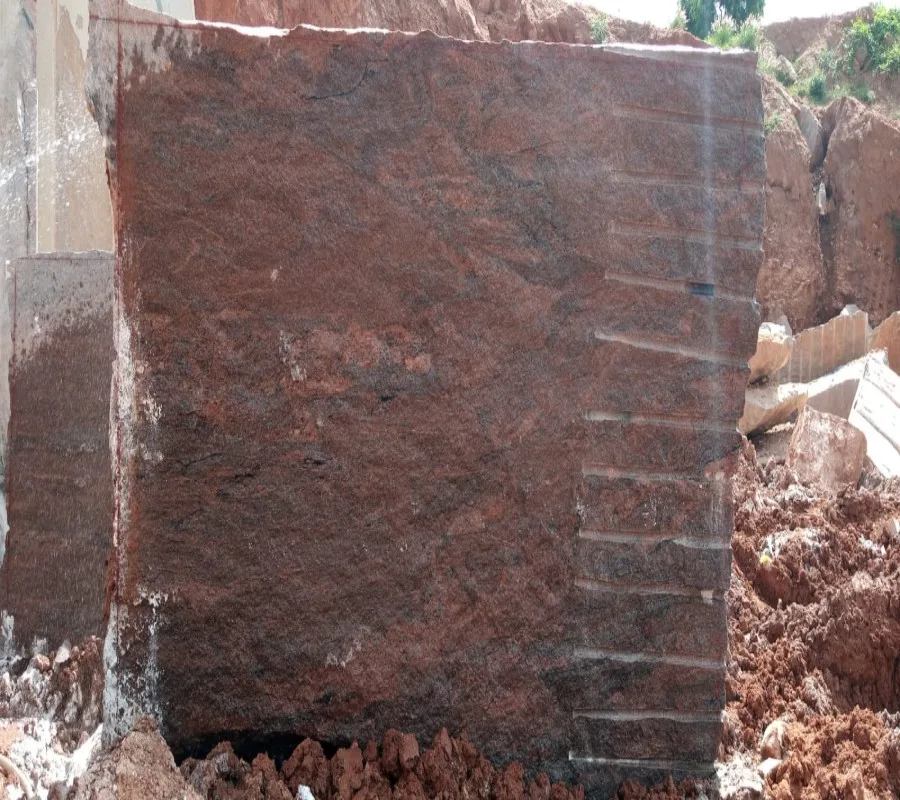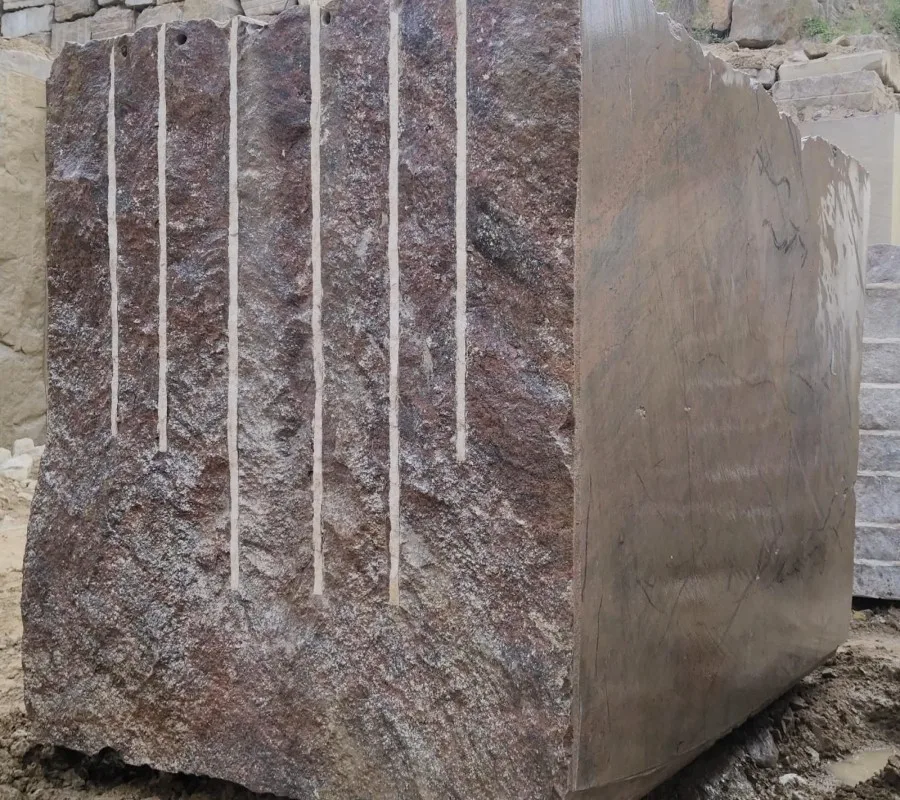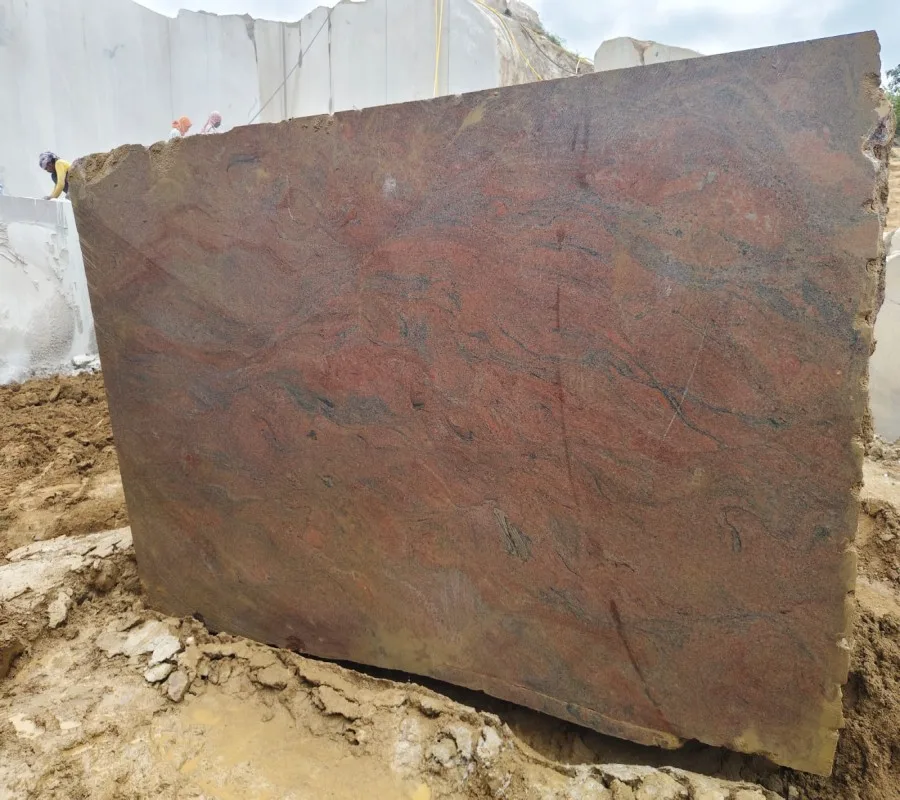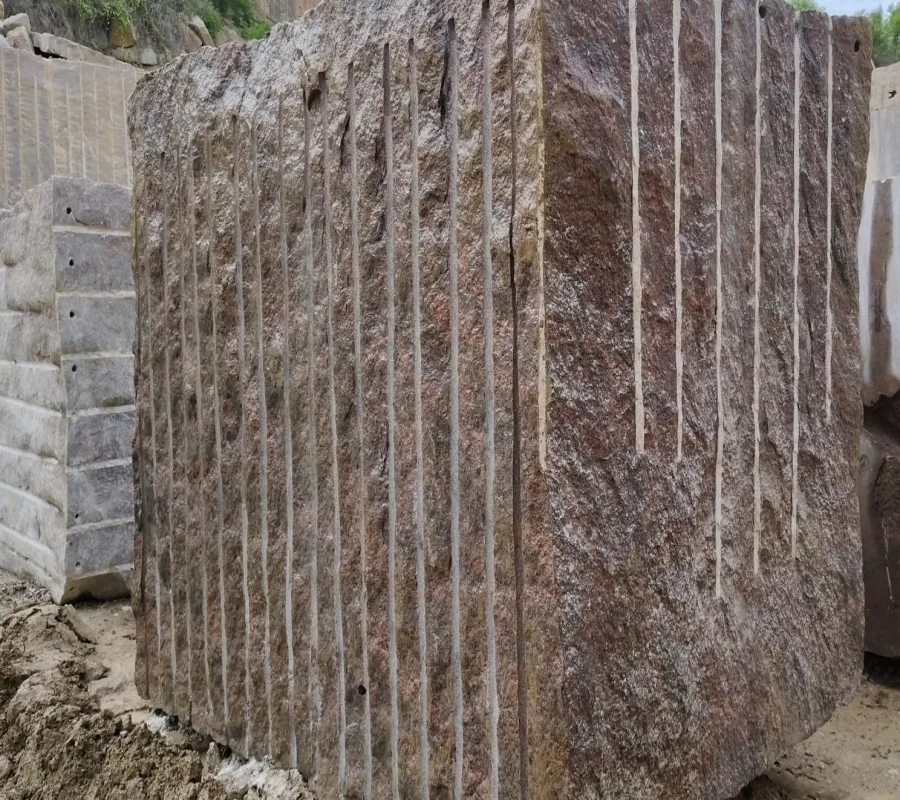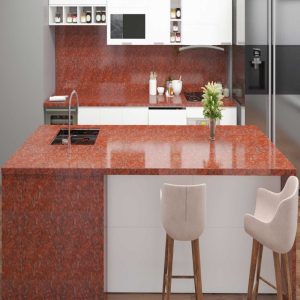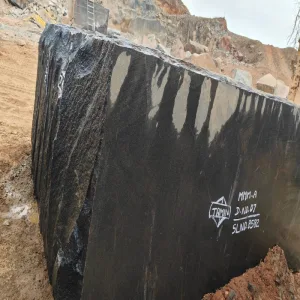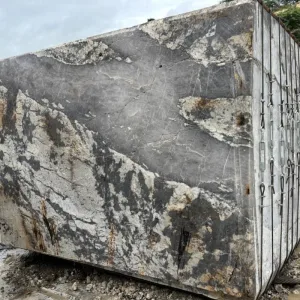Red Multi Granite Blocks serve as raw material for stone fabricators, monument producers, construction contractors, and landscaping designers. The rough-cut blocks arrive directly from quarries with minimal surface processing, reducing initial costs for buyers who perform cutting, polishing, or texturing on-site. Typical applications include exterior building cladding for commercial and residential structures, memorial monuments and headstones, kitchen and bathroom countertops (after fabrication), paving stones for driveways and walkways, and decorative landscape features such as retaining walls and water features. The multi-toned red coloration with natural pink, gray, and black veining provides visual depth and complements both modern and traditional architectural styles.
Performance and Quality Detail
Granite’s igneous formation produces interlocking mineral crystals that deliver compressive strength between 130 and 250 MPa, making Red Multi blocks suitable for load-bearing applications and high-traffic environments. The exceptionally low water absorption rate (<0.4%) minimizes moisture penetration, reducing freeze-thaw damage risk in cold climates and preventing staining in wet conditions. Natural color variation occurs due to mineral composition differences within the quarry; buyers should request samples from specific quarry sections to evaluate color consistency. The rough surface requires secondary processing—sawing, honing, flaming, or polishing—to achieve project-specific finishes.
Materials and Manufacturing Notes
Red Multi granite forms from slowly cooling magma deep underground, creating a coarse-grained structure of feldspar, quartz, mica, and amphibole minerals. Quarrying methods include diamond-wire sawing and controlled blasting to extract large blocks while minimizing internal fractures. Blocks are transported in rough form to reduce shipping weight and handling costs. Secondary fabricators perform precision cutting, edge profiling, and surface treatments based on design specifications.
| Color | Rich Red with Multicolor Speckles (White, Black, Grey) |
| Origin | South India |
| Texture | Compact, high-density, fine-grain structure |
| Size | 180up*60up, 200up*100up, 200up*120up, 260up*160up |
| Density | Approximately 2,750 – 2,850 kg/m³ |
Maintenance and Care
Rough blocks require dry storage to prevent surface staining from iron oxide leaching before installation. Once fabricated and installed, granite surfaces need sealing every 1–3 years with penetrating silicone-based sealers, depending on porosity and environmental exposure. Clean sealed surfaces with pH-neutral stone cleaners; avoid acidic substances (vinegar, citrus-based products) and abrasive scrubbers that can etch or dull polished finishes. Properly maintained granite installations typically last 50+ years in exterior applications and indefinitely indoors.
Installation and Compatibility Notes
Installation requires professional stone fabrication equipment including diamond-blade saws, CNC routers for precision cutting, and water-jet systems for intricate designs. Skilled masons or certified stone installers should handle placement. For vertical cladding, stainless steel anchoring systems prevent rust staining and comply with building codes. Granite’s density (approximately 2,650 kg/m³) requires structural load calculations for wall installations and proper foundation support for paving applications.
Alternative Names for Red Multi Granite Blocks: Red Granite Blocks, Natural Red Multi Granite, Multicolor Red Granite, Indian Red Granite, Multi Red Granite
Pros & Cons
Pros:
- High compressive strength (130–250 MPa) suitable for structural and load-bearing applications
- Extremely low water absorption (<0.4%) provides excellent stain and freeze-thaw resistance
- Multi-toned red coloration with natural veining offers unique aesthetic appeal for each installation
- Long service life (50+ years outdoors) with minimal maintenance when properly sealed
Cons:
- Requires professional fabrication equipment and skilled installers, increasing project costs
- Heavy material (2,650 kg/m³) demands structural engineering for vertical installations and robust foundations
- Natural color variation between blocks requires careful matching and may complicate large uniform installations
Who should buy/Who should not buy
Ideal Buyers:
- Commercial builders specifying durable exterior cladding with distinctive aesthetics
- Monument and memorial fabricators requiring weather-resistant natural stone
- High-end residential contractors for custom countertops, flooring, or feature walls
- Landscape architects designing premium outdoor installations
Not Recommended For:
- DIY homeowners without access to stone cutting and fabrication tools
- Projects requiring perfect color uniformity across large areas (natural variation is inherent)
- Budget-limited projects where engineered stone or concrete alternatives provide better cost-efficiency
FAQs
Q1: What are the standard dimensions for Red Multi Granite Blocks?
Rough blocks typically range from 180–300 cm in length and 150–200 cm in height. Custom dimensions can be negotiated with suppliers but require extended lead times.
Q2: Can Red Multi granite be used for kitchen countertops?
Yes, after professional fabrication. Rough blocks must be cut, edge-profiled, and polished by stone fabricators to meet countertop specifications.
Q3: How do I prevent rust staining on granite installations?
Use only stainless steel anchors, fasteners, and support brackets. Carbon steel or galvanized hardware can cause rust leaching that permanently stains the stone surface.
Q4: Is Red Multi granite suitable for outdoor use in freezing climates?
Yes. The low water absorption rate (<0.4%) provides excellent freeze-thaw resistance, meeting ASTM C615 requirements for exterior applications in cold regions.
Q5: What is the expected lifespan of Red Multi granite installations?
With proper sealing and maintenance, granite installations commonly last 50+ years outdoors and indefinitely in interior applications.
Q6: Do I need expansion joints for large granite installations?
Yes, for exterior installations spanning 10+ meters in regions with significant temperature fluctuations (>40°C annually). Incorporate expansion joints every 6–8 meters to accommodate thermal expansion.

